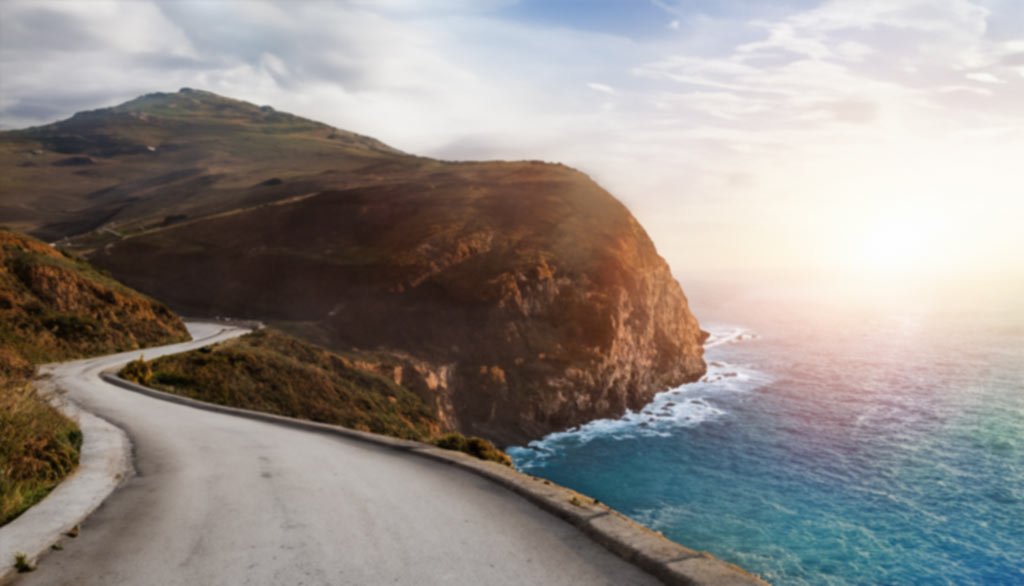
Crete is a welcoming and gay-friendly destination that combines its history, landscapes, and inclusive culture, offering an unforgettable experience for LGBTQ travelers. Crete has an open-minded atmosphere that is reflected in its warm hospitality, LGBTQ+ scene, and diverse offerings across cities like Heraklion and Chania. Read article
The Ideon Cave (Ideon Andron), also called the Idaean Cave, Idaion Antron, or Cave of Ida, is a historical and mythological site located on the Psiloritis Mountain (Nida), the tallest mountain in Crete, Greece. Locals sometimes refer to it as Spiliara tis Voskopoulas (Cave of the Shepherdess) or Arkession Andron (Cave of Aid). Read article

The Minotaur, a creature from Greek mythology, was a half-human, half-bull monster born from the union of Queen Pasiphae of Crete and a divine bull sent by Poseidon. The unnatural birth was a punishment from Poseidon after King Minos of Crete defied the god by refusing to sacrifice the bull. Read article
Agios Pavlos Beach is a remote coastal destination on the southern coast of Crete. It features a small bay with clear green waters, rocky capes, and a rocky seabed. The beach is known for its unique geological formations called the Apoplystra Folds, created over millions of years. Nearby, there's St. Paul's Chapel, believed to have housed the saint on his journey to Rome. Alatsogremni Beach, to the west, offers a quieter alternative with sand dunes and rocky formations, great for snorkeling. The best time to visit is from April to mid-November to avoid extreme summer heat. Agios Pavlos Beach's preservation is due to its remote location and strict construction regulations. Nearby attractions include Cape Melissa, Alatsogremni Beach, and Saint Anthony Monastery. To get to Agios Pavlos Beach, you can drive from cities like Rethymno, but renting a car is recommended for convenience. Read article
Elafonisi is an island and nature reserve near the southwestern corner of Crete, part of the Cretan Islands archipelago, and administered by Greece. Elafonissi Beach is connected to Crete by a sandbar and lies 76 kilometres (47,22 miles) west of Chania and 5 kilometres (3,11 miles) south of Chrysoskalitisa Monastery. Elafonissi area covers 1.5 square kilometres (0,58 square miles) and is protected under the EU Natura 2000 program and is known for its environmental significance. Read article

Easter in Greece and Crete is celebrated with deep spiritual significance, blending Orthodox and festive practices. In 2025, Easter Day falls on April 20th, with Holy Week starting on April 14th. The celebrations in Crete include dyeing red eggs on Holy Thursday, Epitaphios processions on Good Friday, and the midnight Resurrection Service on Holy Saturday. Spring, mainly during Easter, is an excellent time to visit Crete. The mild weather and cultural events make it ideal for exploring villages, hiking, or visiting historical sites. The Easter traditions and the welcoming spirit of Crete create a memorable experience for visitors. Read article

Crete, the largest Greek island, is a premier destination for birdwatching lovers. It offers a wide range of habitats, from gorges to wetlands. As part of the EU Natura 2000 network, the island benefits from active conservation efforts that preserve its ecosystems and protect its biodiversity. The topography of Crete is home to birds of prey that define the natural heritage. Griffon Vultures (Gyps fulvus) and Golden Eagles (Aquila chrysaetos) command high-altitude regions like the White Mountains (Chania) and Psiloritis (Heraklion). Bonelli’s Eagles (Aquila fasciata) and Peregrine Falcons (Falco peregrinus) bring speed and precision. During peak migration seasons in spring (March) and autumn (September–November), temperatures range from 15 ℃ (59 ℉) to 25 ℃ (77 ℉), creating ideal conditions for birdwatching lovers to explore the natural wonders. Read article
Crete provides diverse activities in Hersonissos, Balos, Spinalonga, and Santorini. Private boat rentals range from €50 ($54.40, £44) for motorboats to €1,500 ($1,630, £1,323) for yachts with skippers. Popular day trips include Knossos Palace, Heraklion City tours, and Samaria Gorge hikes, costing €35 ($38.10, £30.80) to €50 ($54.40, £44) per person. Crete is accessible by ferries from Athens and nearby islands, with tickets starting at €36 ($39.20, £31.70). Snorkeling and paddleboarding are favored at Elafonissi Beach and Agia Pelagia. Combo packages for car rentals and boat trips are available, with reliable services like Rental Center Crete. Read article
Agioi Apostoloi Beach attracts locals and tourists through its accessibility and amenities. The beach lies on a small peninsula with three bays separated by rocky outcrops. Sandy shores, blue-green waters, and surrounding vegetation provide a space for relaxation. The name "Agioi Apostoloi" originates from a small church dedicated to the Holy Apostles, located on a headland above the beach. The church offers a panoramic view of the bays and serves as a summer wedding venue. Read article

Spilies Beach lies 15 kilometers (9 miles) east of Rethymnon in Crete. Spilies beach, located between Skaleta and Geropotamos, sits near the highway connecting Heraklion and Rethymnon. A small rocky bay surrounds the pebbly beach, offering deep crystalline waters and protection through towering vertical cliffs. Read article
Crete, Greece's largest island, offers diverse beaches for all preferences. Livadi Beach enchants families with green waters and modern amenities. Sougia Beach provides tranquility with pebbly shores and hiking trails. Sarantaris Beach near Hersonissos offers snorkeling and serenity.Kommos Beach, an ancient Minoan port, attracts history buffs with its ruins. Agiofarago Beach combines natural beauty and history, accessible through a gorge hike. Limanakia Beach provides family fun with calm waters and cultural attractions. Read article
Crete is a remarkable destination for beach enthusiasts, offering a big number of stunning beaches, each with its own unique charm. Vai Beach is famous for its palm-fringed shores, providing a tropical feel in the Mediterranean. Balos Beach is recognized for its pink-tinged sands and breathtaking views, making it a must-visit spot for those seeking natural beauty. Read article

Traveling to Crete involves adherence to specific entry requirements influenced by Greece’s national regulations and international standards. These requirements are determined by factors such as nationality, travel purpose, and current global conditions. As a major destination, Crete’s travel protocols aim to ensure smooth and secure entry for visitors while accommodating a wide range of travelers. Read article

Crete shopping offers a blend of traditional craftsmanship and modern retail experiences. Visitors can explore local markets, boutique shops, and artisan workshops showcasing unique products such as handmade textiles, pottery, jewelry, and regional delicacies like olive oil and honey. The shopping culture in Crete emphasizes authenticity, with many items rooted in centuries-old techniques and traditions. From urban centers to village markets, shopping in Crete provides a chance to connect with the island’s history and creativity. Read article

Going on a trip to Crete and wanting to bring back memorable souvenirs to each of those moments into your heart and mind? Looking for the best souvenirs on any visit to Crete can be a tough nut to crack. From traditional jewelry and mouth-watering Cretan food to other Cretan products, you will have a variety of souvenirs to choose from while touring here. Crete has a rich history and is famous for its customs and traditions. You will definitely want to cherish your days in Crete with the 'right' type of souvenir, something that speaks to your heart. Read article

Crete's economy combines tradition and modernity, shaped by its natural resources, location, and cultural heritage. The island’s landscape supports agriculture, tourism, and trade, establishing Crete as a commercial hub. Its economy balances historical traditions with evolving industries, demonstrating resilience and adaptability. Resources and cultural identity drive growth, showing how sustainable development arises from local strengths in a changing global context. Read article

Crete is the most populated and largest among the islands of Greece. It has an area of 8,336 sq mi. It is located about 160 km south of the Greek mainland. And about 100 km southwest of Anatolia. Crete’s capital and largest city are Heraklion. During the Palaeolithic age, humans have inhabited the island since at least 130,000 years ago. Crete was the cradle of Europe’s first civilisation. Read article
The Greek population reflects historical and cultural heritage shaped by centuries of tradition, migration, and societal development. The demographic distribution varies across urban centers, rural areas, and islands, contributing to the country’s diverse social and cultural landscape. Population trends in Greece are influenced by factors such as economic conditions, regional development, and migration patterns. The Greek population offers insights into the nation’s cultural fabric, societal structure, and the dynamics shaping its modern identity. Read article
Crete, Europe’s oldest continuously inhabited island, evolved from Neolithic communities into the advanced Minoan civilization, famous for its monumental palaces and maritime influence, before undergoing Mycenaean invasions and later incorporation into Roman, Byzantine, Arab, Venetian, and Ottoman domains. Following prolonged foreign rule and frequent uprisings, it attained autonomy as the Cretan State in 1898 and officially unified with Greece in 1913. The Mediterranean island preserves its distinct cultural identity through its dialect, music, dance, cuisine, and religious traditions. Its strategic geographical position, historical layers, and archaeological heritage continue to shape its cultural and economic significance. Read article
Crete, the largest Greek island, combines history, culture, and beauty across its destinations. Coastal areas offer sandy beaches, nightlife, and landmarks, while inland villages provide setting and traditional Cretan cuisine. Visitors can explore ancient ruins, relax by the sea, or experience the heritage, making Crete an ideal destination for all travel styles. Read article




























